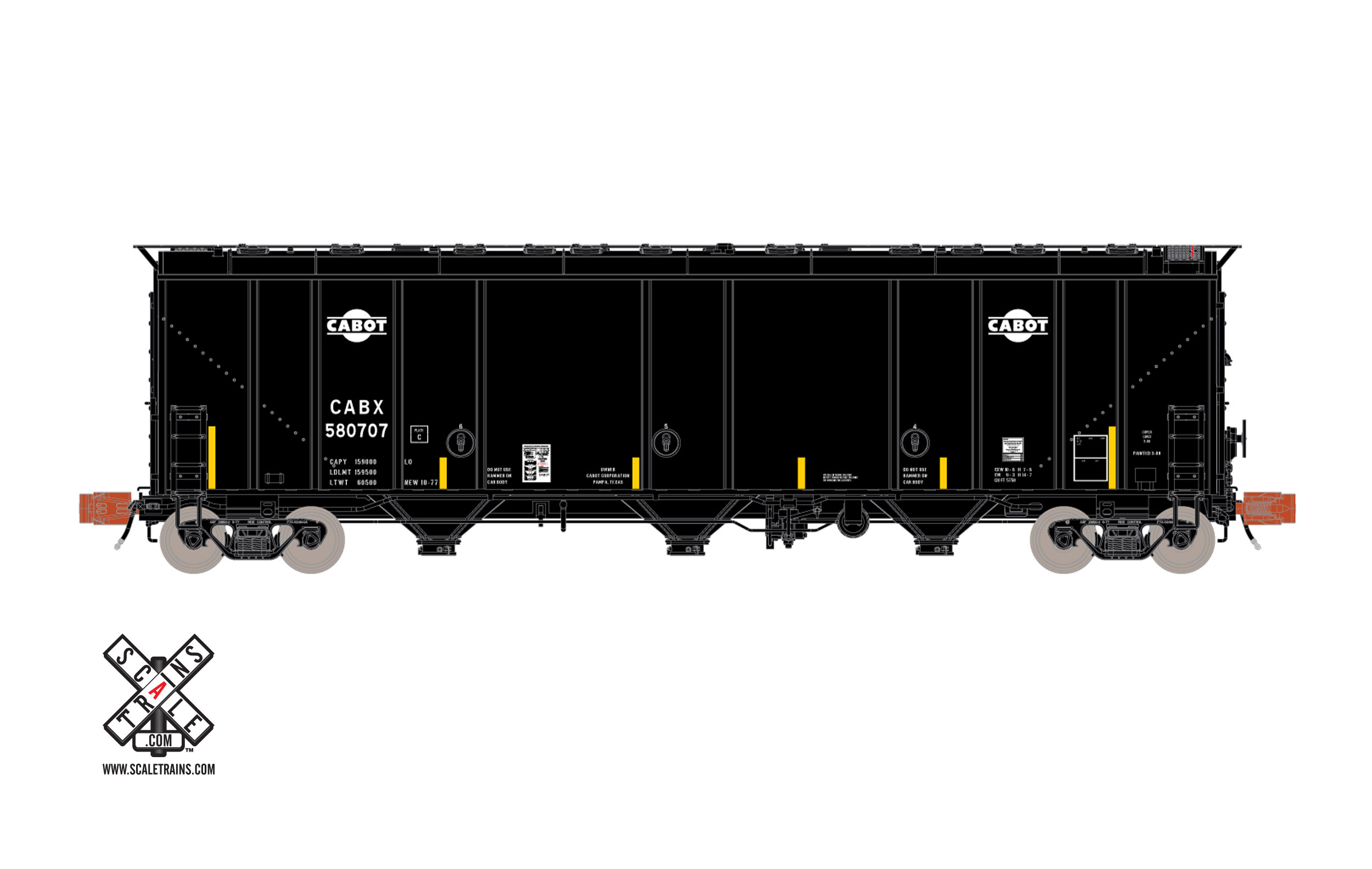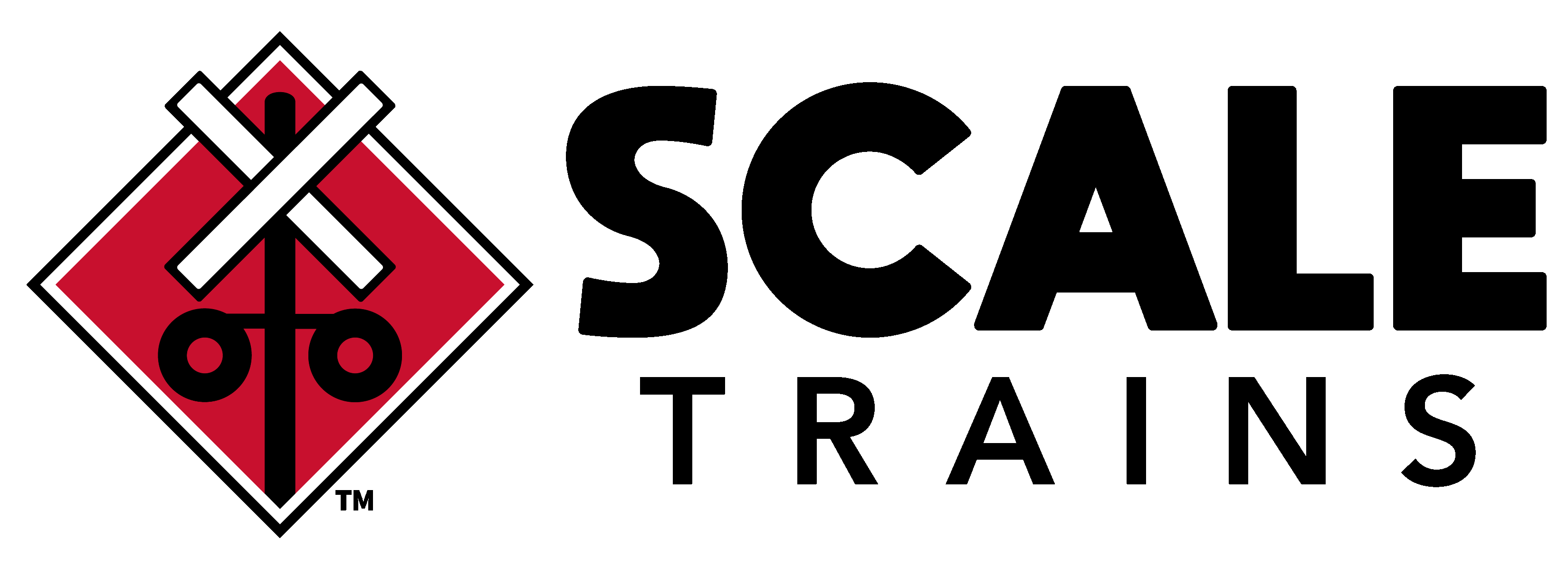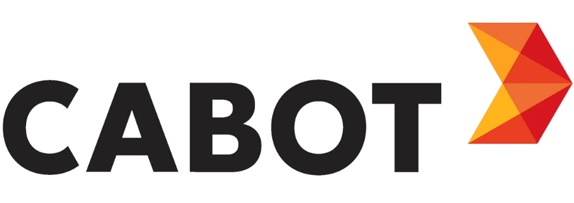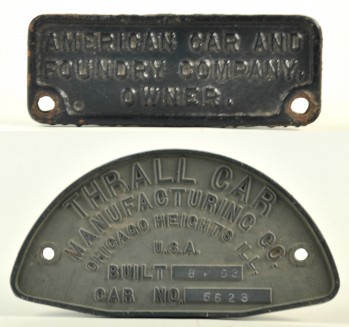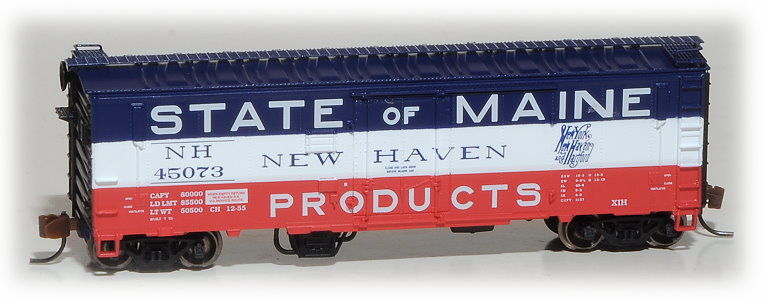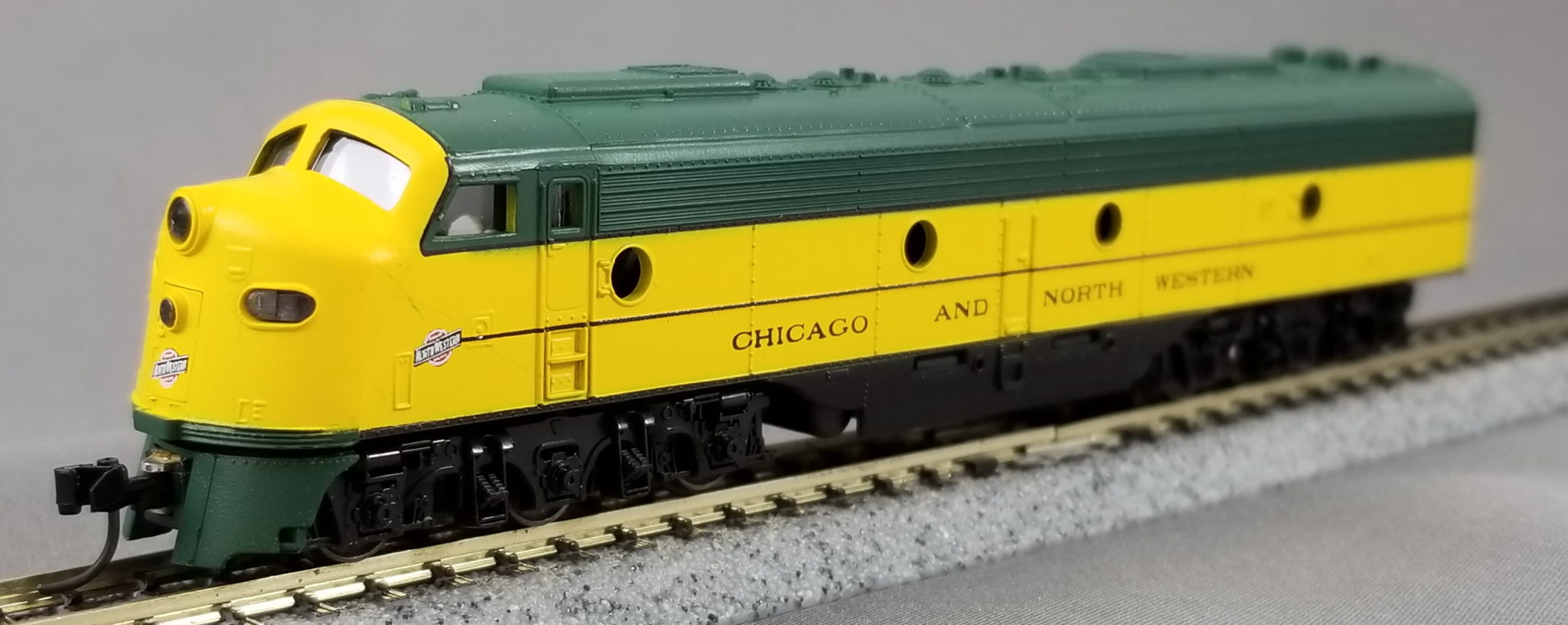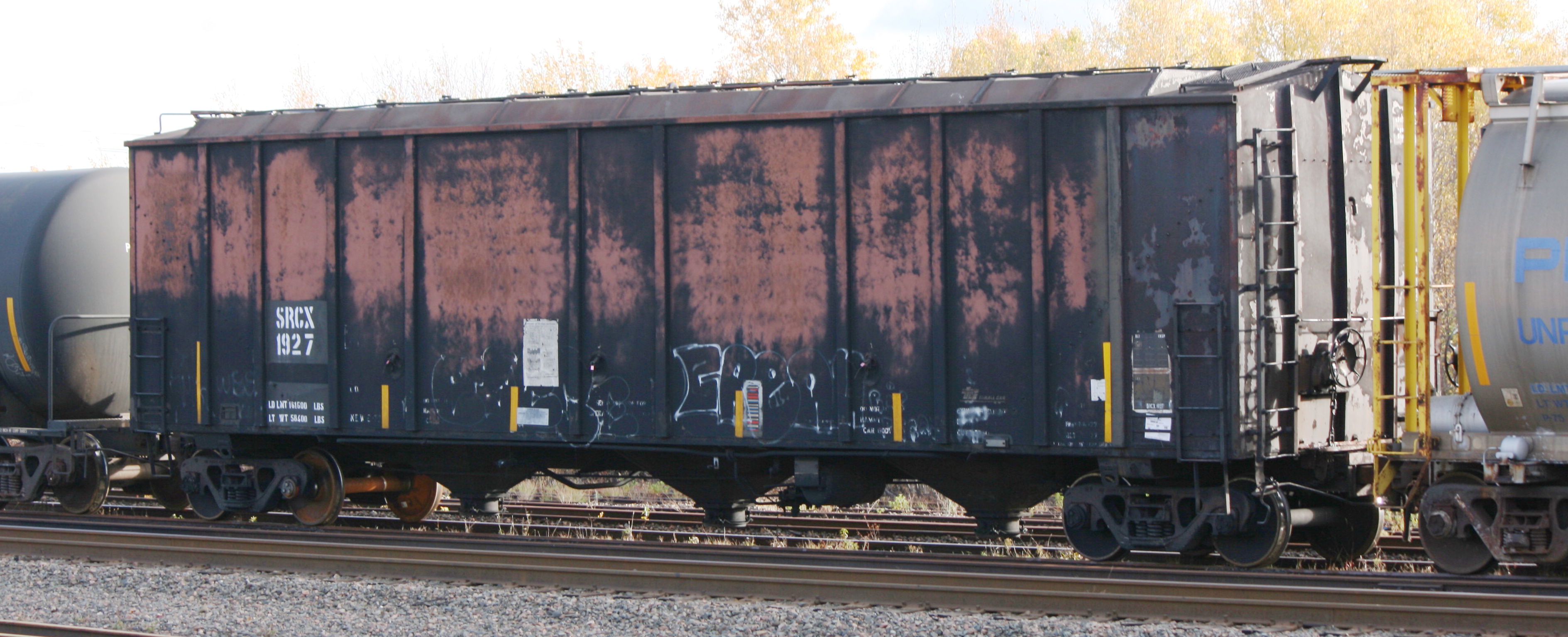Specific Item Information: Cabot/CABX 580718
Thrall 5750 cubic foot carbon black covered hoppers. The 5750 represents the 1970s to present
From series CABX 580703-580722, built October 1977
10/07 repaint date with FRA-224 reflective stripes, and no logos
Painted “faded black” to represent current prototype appearance
22 roof hatches
Thrall 5750 cubic foot carbon black covered hoppers. The 5750 represents the 1970s to present
Model Information: ScaleTrains first announced this model in 2017 and first delivered it in March of 2018. It is a highly detailed model of a specialized 3-bay cover hopper car. It features:
a 1970s carbody featuring 10 column-style posts per side and unique double hip roofline,
Separate granuflator plumbing,
Per prototype: 22 or 28 roof hatches,
Photo-etched stainless steel running boards and end platforms,
Separately-applied ladders,
Finely-detailed underbody brake detail,
Body mounted semi-scale plastic Type E knuckle couplers,
All-new ASF Gould-cast 70-ton Ride Control Trucks with finely rendered raised foundry data,
33” machined metal wheels, Coupler cut levers, Trainline hoses, Intricate brake plumbing,
Color matched to Tru-Color Paint colors whenever possible,
Printing and lettering legible even under magnification.
The knuckle couplers at first appear to be McHenry's due to the outside spring, but in fact seem to be a new design. We tested them by coupling them to a Micro-Train model with body-mount couplers and they played nicely together. They seem to be somewhat delicate, as one of the two sample models that arrived had a broken coupler. The detail is excellent, but one of the half-ladders literally fell off as I rotated the car in my hands. I am very leery of actually running these things.
The knuckle couplers at first appear to be McHenry's due to the outside spring, but in fact seem to be a new design. We tested them by coupling them to a Micro-Train model with body-mount couplers and they played nicely together. They seem to be somewhat delicate, as one of the two sample models that arrived had a broken coupler. The detail is excellent, but one of the half-ladders literally fell off as I rotated the car in my hands. I am very leery of actually running these things.
Prototype History: Found throughout North America, these unique freight cars are commonly found in large groups near major carbon black producers or users. They can also be seen singularly or in small blocks of cars in mixed freight trains. Both prototypes were painstakingly researched from field documentation, photographs, reference books, and builder drawings.
During the 1970s, Thrall Manufacturing Co. introduced a new railcar designed for handling carbon black. These 3-bay, 70-ton capacity covered hopper cars boasted a volume of 5750 cubic feet, and measured 51’ over their ends. Unlike traditional covered hopper designs, where the end slope sheets are plainly visible, these cars featured an enclosed, boxy design, which was a necessity due to a special design feature to aid in the unloading of carbon black.
At the inside ends of the car are special inflatable bags, called “granuflators”. When the car is loaded, they lay flat inside the car. When inflated with pressurized air, the granuflators expand, and push the carbon black towards the outlets. As typical with cars designed to haul carbon black, they featured tight-sealing 16” round roof hatches (22 or 28 depending upon customer specifications), sampling spigots on the car sides, and “butterfly” type outlet gates.
The “1970s” version of the 5750 represents production from approximately 1977 until 1979. This car features ten column-style posts per side and a unique roofline. While the ends are peaked and the end roof panels feature a single slope, the remaining roof panels feature a dual slope and a steep shoulder where it meets the side plate. Many of these cars are still in service today.
During the 1970s, Thrall Manufacturing Co. introduced a new railcar designed for handling carbon black. These 3-bay, 70-ton capacity covered hopper cars boasted a volume of 5750 cubic feet, and measured 51’ over their ends. Unlike traditional covered hopper designs, where the end slope sheets are plainly visible, these cars featured an enclosed, boxy design, which was a necessity due to a special design feature to aid in the unloading of carbon black.
At the inside ends of the car are special inflatable bags, called “granuflators”. When the car is loaded, they lay flat inside the car. When inflated with pressurized air, the granuflators expand, and push the carbon black towards the outlets. As typical with cars designed to haul carbon black, they featured tight-sealing 16” round roof hatches (22 or 28 depending upon customer specifications), sampling spigots on the car sides, and “butterfly” type outlet gates.
The “1970s” version of the 5750 represents production from approximately 1977 until 1979. This car features ten column-style posts per side and a unique roofline. While the ends are peaked and the end roof panels feature a single slope, the remaining roof panels feature a dual slope and a steep shoulder where it meets the side plate. Many of these cars are still in service today.
Road Name History: Cabot Corporation (NYSE: CBT) is a leading global specialty chemicals and performance materials company headquartered in Boston, Massachusetts, USA.
Cabot Corporation was founded by Godfrey Lowell Cabot who applied for a patent for a "carbon black making apparatus". In 1882, after graduating from Harvard University, Godfrey and his brother Samuel Cabot buy the McCue well near Worthington, Pennsylvania, USA and open their first carbon black plant. In 1922, Godfrey forms his first legal entity when “Godfrey L. Cabot, Inc.” is incorporated.
Cabot Corporation's reporting mark is CABX.
Cabot Corporation was founded by Godfrey Lowell Cabot who applied for a patent for a "carbon black making apparatus". In 1882, after graduating from Harvard University, Godfrey and his brother Samuel Cabot buy the McCue well near Worthington, Pennsylvania, USA and open their first carbon black plant. In 1922, Godfrey forms his first legal entity when “Godfrey L. Cabot, Inc.” is incorporated.
Cabot Corporation's reporting mark is CABX.
Brand/Importer Information: ScaleTrains.com, Inc. is an upstart HO and N Scale model manufacturer that was founded by a team with more than 125 years of accumulated experience in the model railroad hobby and industry.
ScaleTrains is specifically focused on the tiny details in the printing and quality of the construction. The four friends who founded the company are all avid modelers themselves. Their factory is located in Tennessee. Unlike most other companies, they offer a range of different levels of complexity in their offerings so as to be able to provide products for both the budget-conscious collector as well as the detail-focused model enthusiast without compromising on quality for either.
They range covers the following, by increasing level of detailing:
ScaleTrains is specifically focused on the tiny details in the printing and quality of the construction. The four friends who founded the company are all avid modelers themselves. Their factory is located in Tennessee. Unlike most other companies, they offer a range of different levels of complexity in their offerings so as to be able to provide products for both the budget-conscious collector as well as the detail-focused model enthusiast without compromising on quality for either.
They range covers the following, by increasing level of detailing:
- Operator™ trains are built for modelers who enjoy running high-quality, realistic trains at an affordable price. Designed from builder’s drawings and photographs, Operator models have fewer factory-applied parts and simplified printing. For added versatility, super-detail parts are available separately.
- The Rivet Counter™ line strives to create the most accurately detailed models imaginable. The real-world counterpart is meticulously researched to ensure prototype fidelity. Each model features numerous factory applied parts including roadname and road number specific details whenever possible.
- Museum Quality™ models are historically accurate replicas of the most famous locomotives in North American railroading history. Exhaustive research and a commitment to perfection combine to create the ultimate scale model. Museum Quality trains establish new standards which make them just as legendary as the original.
Item created by: Powderman on 2018-01-01 16:14:05. Last edited by CNW400 on 2020-07-20 12:53:16
If you see errors or missing data in this entry, please feel free to log in and edit it. Anyone with a Gmail account can log in instantly.
If you see errors or missing data in this entry, please feel free to log in and edit it. Anyone with a Gmail account can log in instantly.


